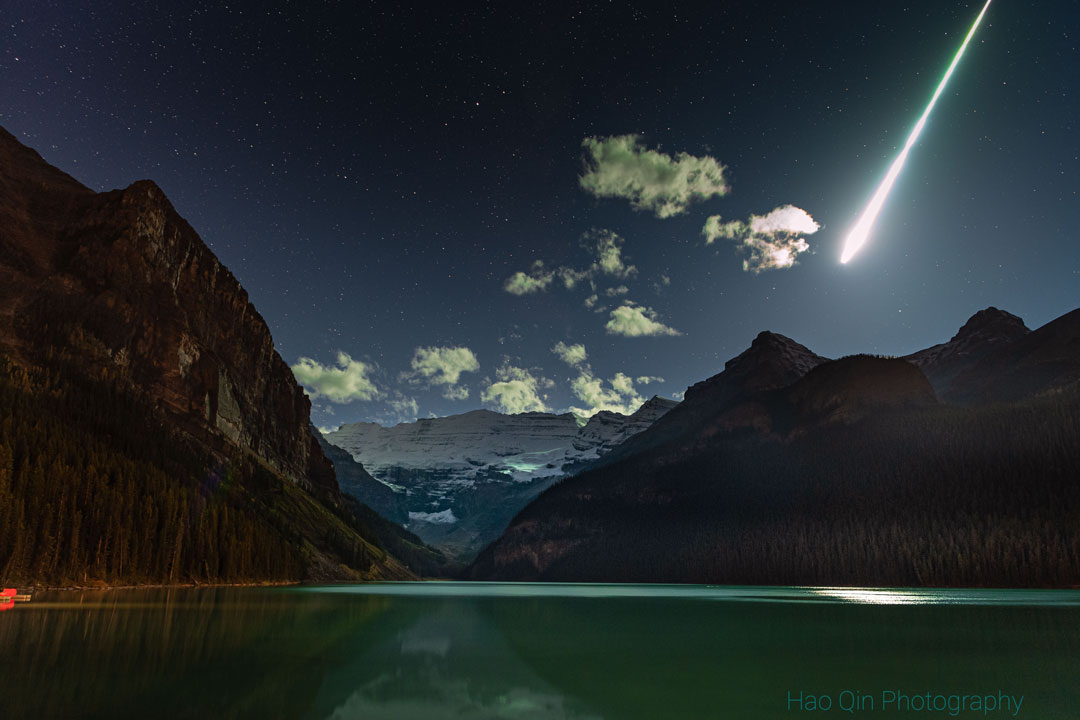路易斯湖上空的火球
(原标题: Fireball over Lake Louise)
2021-10-12
浏览次数: 128
是什么使流星成为火球?首先,每个人都同意火球是一种异常明亮的流星。在此之后,国际天文学联合会将火球定义为比视星等-4更亮的流星,这相当于(大致)比任何行星都亮,也足够亮,能投射出人类明显的阴影。图中,一位天体摄影师在拍摄长时间的天空图像时,意外地捕捉到了他所见过的最亮的流星。这显然是一个火球,这颗正在解体的太空岩石在本月早些时候留下了一条如此明亮的轨迹,它在大约两秒钟的时间里把黑夜变成了白天。在这张特色图片中,火球被人为地调暗,以突显加拿大阿尔伯塔省路易斯湖的前景。虽然火球很罕见,但很多人都有幸看到过。如果你看到火球,你可以报告。如果不止一个人记录了一张图像,那么火球可能会被追溯到它被抛出的太阳系天体。
查看原文解释
What makes a meteor a fireball? First of all, everyone agrees that a fireball is an exceptionally bright meteor. Past that, the International Astronomical Union defines a fireball as a meteor brighter than apparent magnitude -4, which corresponds (roughly) to being brighter than any planet -- as well as bright enough to cast a human-noticeable shadow. Pictured, an astrophotographer taking a long-duration sky image captured by accident the brightest meteor he had ever seen. Clearly a fireball, the disintegrating space-rock created a trail so bright it turned night into day for about two seconds earlier this month. The fireball has been artificially dimmed in the featured image to bring up foreground Lake Louise in Alberta, Canada. Although fireballs are rare, many people have been lucky enough to see them. If you see a fireball, you can report it. If more than one person recorded an image, the fireball might be traceable back to the Solar System body from which it was ejected.
© Hao Qin
